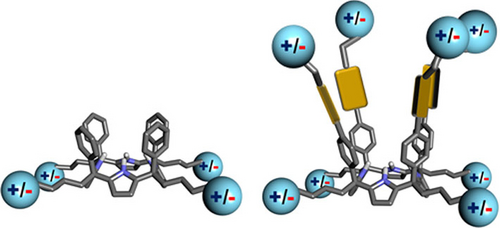The study of molecular recognition processes in water using biomimetic synthetic receptors provides valuable information for understanding more complex biological processes. In the last decade, our group focused on the use of aryl-extended calix[4]pyrrole (AE−C[4]P) scaffolds for the binding of small polar molecules in water. The cone conformation of tetra-α isomers of aryl-extended calix[4]pyrroles defines a deep hydrophobic cavity with an open end and functionalized with converging hydrogen-bond donor groups in its closed end. In this sense, AE−C[4]Ps can be considered as simple biomimetic analogs of enzyme binding sites. In this account, we describe the synthetic strategies used for the preparation of water-soluble AE- and super aryl-extended (SAE−) C[4]Ps. We review and rationalize the results of their molecular recognition studies in water using pyridyl-N-oxide derivatives and a series of small and neutral polar molecules as guests and comment on their applications as supramolecular and sequestering protective groups.
